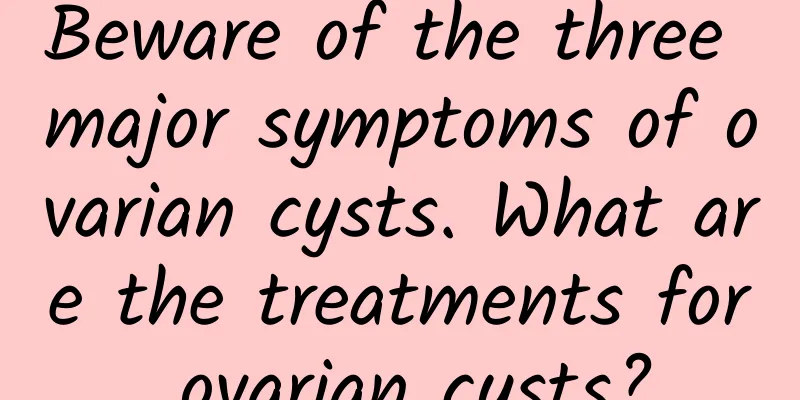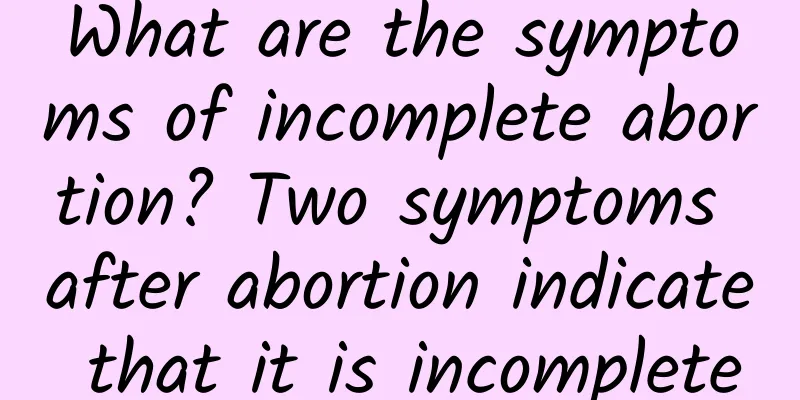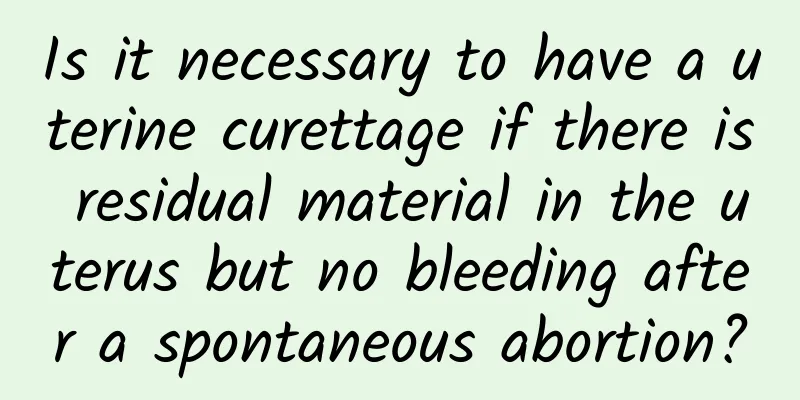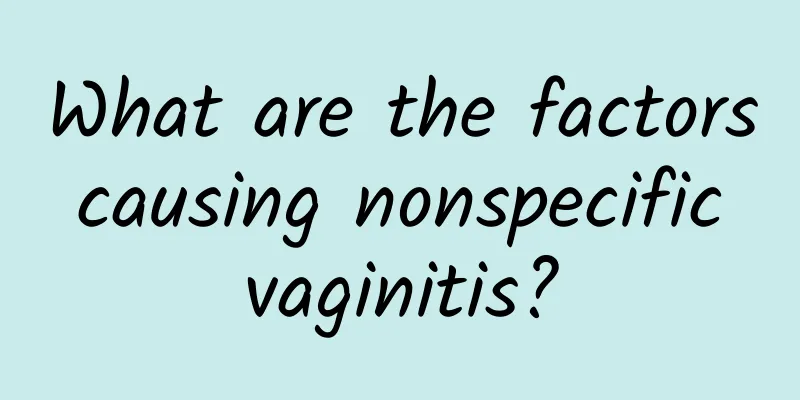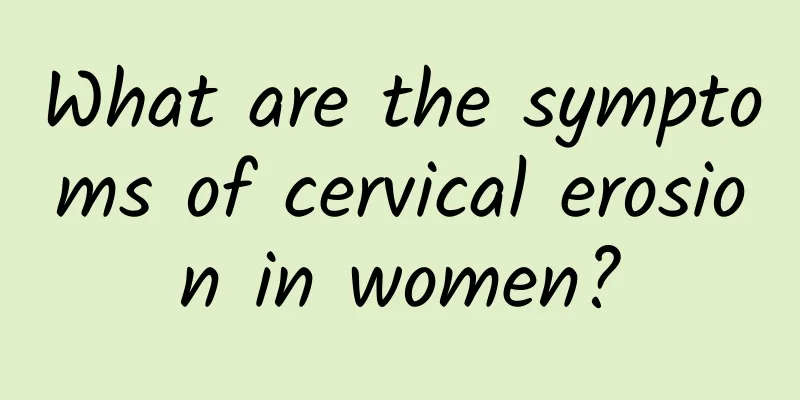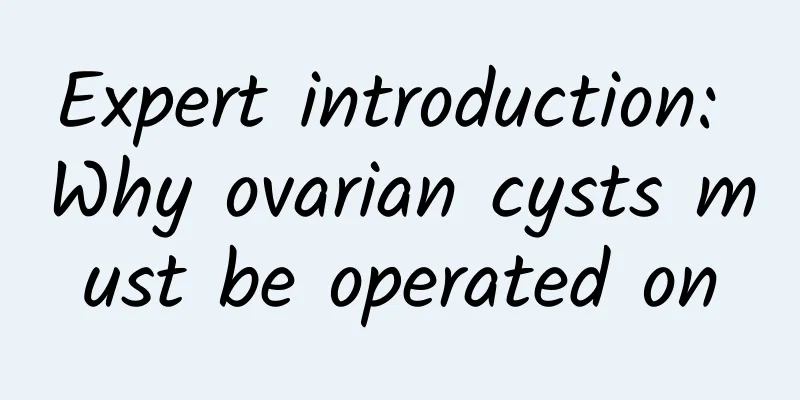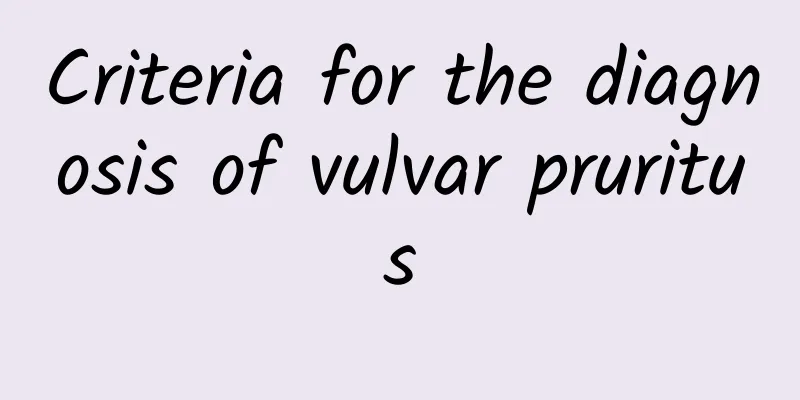|
Beware of the three major symptoms of ovarian cysts. What are the treatments for ovarian cysts? For women, ovarian cysts are very harmful, so female friends know that ovarian cysts should be detected and treated early. However, many women do not know the symptoms of ovarian cysts, so they miss the best time for treatment. Through the above introduction, let's learn about the symptoms of ovarian cysts. 1. Cachexia.
The main symptom of patients with advanced ovarian cysts is cachexia. Gynecological examination can reveal scattered hard nodules in the posterior fornix of the vagina. The lumps mostly occur on one side, are generally fixed, solid or semi-solid, with an uneven surface, and are often accompanied by symptoms of bloody ascites. Enlarged lymph nodes can also be touched in the groin, armpits or clavicle.
2. Abdominal distension occurs.
Because malignant tumors develop rapidly, patients will experience abdominal distension in a short period of time, which is often accompanied by ascites during examination, which is the main symptom of ovarian cysts.
3. Abdominal pain.
If a malignant ovarian cyst involves peripheral nerves and absorbs nutrients from surrounding organs, the patient will have obvious symptoms of lower abdominal pain, back pain or lower limb pain. If the pelvic veins are squeezed, the patient will also experience lower limb edema. If the tumor is a functional lesion, the patient often shows excessive androgen. Patients with malignant ovarian cysts have abdominal pain symptoms, especially right lower abdominal pain, which needs to be differentiated from diseases such as pelvic inflammation to avoid misdiagnosis and delay early treatment.
Ovarian cysts are the most common ovarian tumors, one of the most common gynecological tumors in clinical practice, and one of the diseases that cause premature death in women. Women of any age can get the disease, but the most common age group is between 20 and 50. It is one of the malignant tumors that threatens women's lives. So, how to treat ovarian cysts?
The method of treating ovarian cysts depends on the patient's age, whether the symptoms have become malignant, the location, volume, size, growth rate of the cyst, deformation of the uterine appendages, whether the reproductive function is retained, and the patient's subjective wishes.
1. Traditional Chinese medicine prescription for the treatment of ovarian cysts:
12 grams of laver, 10 grams of white mustard seeds, 10 grams of trillium, 20 grams of coix seed, 10 grams of peach kernel, 20 grams of selfheal, 6 grams of arisaema, and 12 grams of red peony root.
Efficacy: Regulating Qi and relieving stagnation, promoting blood circulation and resolving phlegm, softening hard masses and reducing swelling.
Scope of application: It has obvious effects on various cysts, especially ovarian cysts. It also has certain effects on uterine fibroids, teratomas, liver and kidney cysts.
Usage: decoction, 600 ml of liquid, 300 ml each time, twice a day, 10 days as a course of treatment, 1-2 courses of treatment with 1 B-ultrasound, if the effect is good, take it until the tumor disappears. If the drug is used for 3 courses of treatment, if the tumor continues to grow, it is ineffective, and a CT scan can be done to confirm the diagnosis before other treatments.
Note: If you suddenly experience severe lower abdominal pain, you should have an ultrasound examination in time to see if the tumor has twisted, and you should undergo surgery in time.
2. Surgical treatment of benign ovarian cysts:
1) Ovarian cystectomy: For patients without menstrual disorders or pregnancy, if the tumor is more obvious on one side, salpingo-oophorectomy on the affected side can be performed.
2) Salpingo-oophorectomy: For patients over 45 years old, unilateral or bilateral oophorectomy is usually used for bilateral ovarian cysts. If the patient's systemic condition cannot be completely removed, total hysterectomy may be performed when the inflammation is severe.
3) Adnexectomy and total hysterectomy: ovarian cysts on one or both sides in perimenopausal or postmenopausal women.
The patients had poor systemic conditions and all underwent bilateral adnexectomy and total hysterectomy, but this had a serious impact on endocrine disorders.
3. Surgical treatment of malignant ovarian cysts:
1) For patients in the advanced stage, the primary cyst and visible pelvic and abdominal metastases should be removed as much as possible.
2) For ovarian malignant tumors accompanied by ascites, whether or not the tumor is completely removed, it is best to place a catheter in the abdominal cavity to facilitate the postoperative injection of anticancer drugs or radioactive colloidal gold or colloidal phosphorus into the abdominal cavity.
Clinically, the treatment of ovarian cysts is mainly divided into conservative treatment and surgical extraction treatment. It is best not to perform surgery for ovarian cysts unless it is absolutely necessary. Once the ovaries, fallopian tubes and uterus are removed, it will have different degrees of impact on women's physiology and psychology. Many patients have reported that the cysts grow faster and faster, so ovarian cysts cannot be stimulated or removed casually. Choose drugs for active treatment and combine close follow-up and reexamination, pay attention to changes in the nature of ovarian cysts, and then take corresponding countermeasures. |
